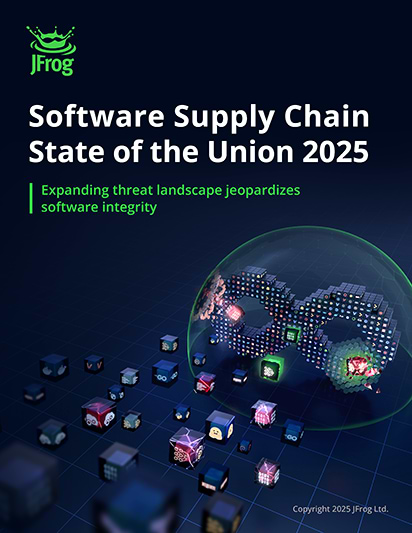Definition
DevOps is a managerial and technical approach that unifies software development and operations to deliver software releases faster and more reliably. DevSecOps, with its emphasis on security, extends DevOps by integrating security considerations into every stage of the software development lifecycle. While DevOps optimizes how you ship, DevSecOps ensures what you ship is secure by design.
Overview
Understanding the relationship between DevOps and DevSecOps centers on where and how security fits into development operations. DevOps streamlines collaboration and automation for speed and stability, while DevSecOps adds continuous, built-in security with the goal of having minimal impact on the speed and quality of development. Finding the right balance should ultimately result in fast delivery with fewer vulnerabilities and better compliance for GRC teams.
Understanding DevOps vs DevSecOps
Both DevOps and DevSecOps have the same goal of delivering secure, quality software in the most efficient way possible. The difference is emphasis: DevOps focuses on collaboration, automation, and feedback loops across the build, test, and release phases of the Software Development Lifecycle (SDLC). DevSecOps preserves that engine and embeds security controls -threat detection, policy enforcement, and risk visibility – directly into the pipeline. Practically, that means the same commit that triggers a build and testing also triggers security checks and supply chain validation. In this way, security becomes a continuous activity, not a checkpoint along the way.
What is DevOps?
To understand how DevOps compares to DevSecOps, it’s important to first break down what DevOps means, how it works, and the principles that guide it.
Core Principles of DevOps
DevOps unifies developers and operations professionals around these shared objectives:
- Shorten lead time
- Increase release frequency
- Maintain service reliability
Core principles include collaborative workflows, pervasive automation, trunk-friendly version control, continuous integration and delivery, and tight feedback via monitoring and incident learning. The result is smaller, safer changes shipped more often.
Key Practices and Methodologies in DevOps
DevOps pipelines automate routine work so human effort focuses on design and problem-solving. Teams adopt version control for everything, from third party code and infrastructure templates, infrastructure as code (IaC) for reproducible environments, automated testing to protect quality at speed, and progressive delivery techniques to reduce blast radius. Observability closes the loop so performance, availability, and user impact inform the next change.
Role of Collaboration in DevOps
DevOps is as much about well defined processes as it is about technology. Shared ownership replaces playing the mutual blame game. Developers see operational realities, while operations design development environments for maximum transparency and minimal wasting time on routine repetitive tasks. This collaboration reduces wait states, clarifies priorities, and turns release day into a routine event rather than a cardiac experience.
What is DevSecOps?
Building on the foundation of DevOps, DevSecOps extends DevOps key principles, while embedding security into every stage of the development lifecycle.
Definition and Evolution of DevSecOps
DevSecOps is DevOps with security woven in from the start. It emerged when teams realized speed alone wasn’t enough and vulnerabilities discovered at the end of a release cycle are expensive to fix and slow to remediate. More recently, DevSecOps strategy is moving towards “shifting left” by bringing security into planning, coding, building, testing, and deployment – to be proactive during all stages of development rather than waiting until after an application is released.
Integration of Security into the DevOps Pipeline
Security controls are similar to quality checks, such as static analysis during development, dependency and container scanning in build and test, configuration and policy checks for infrastructure and cloud resources, and runtime monitoring after release. Software supply chain safeguards – like verifying provenance and scanning third-party components- are central to the way organizations are reducing risk and exposure.
Importance of a Security-First Mindset
DevSecOps reframes security as a shared, continuous responsibility. Developers write and test with secure defaults, operations enforce hardened configurations and security guidelines and policy generate the guardrails. Vulnerability handling becomes more efficient, supported by vulnerability management programs that prioritize and track remediation as part of the software release journey – not afterwards.
Similarities Between DevOps and DevSecOps
These two operational entities overlap substantially, sharing value collaboration across roles, automation to reduce toil and error, and continuous practices (CI/CD) to keep software always releasable. Both also rely on feedback loops from builds, tests, and production to improve the next iteration. In many organizations, DevSecOps uses the same pipeline, but extends it to include security gates and policies alongside checks for quality and performance.
Key Differences Between DevOps and DevSecOps
While DevOps and DevSecOps share the same foundation of collaboration, automation, and continuous delivery, their day-to-day execution diverges in three important ways:
- Security as a built-in control, not a gate
In traditional DevOps pipelines, security is often validated later in the cycle – through dedicated audits, penetration testing before release, or separate review processes. This can create bottlenecks and increase the risk of discovering vulnerabilities too late. DevSecOps shifts this left by embedding security in the pre-coding and coding stages, ensuring that vulnerabilities are caught and addressed as they are discovered and not after the software has been released. - Responsibilities and teaming
DevOps centralizes delivery ownership across development and operations teams. DevSecOps extends that ownership to include security, making it a first-class citizen in planning, implementation, and deployment. This involves proactive measures like threat modeling during sprint planning, adhering to secure coding standards, integrating automated policy enforcement, and defining clear remediation processes when issues arise. The result is shared accountability—developers, operations engineers, and security specialists work from the same pipeline data, with no ambiguity about who owns fixing a discovered risk. - Security tools impact on workflow
While DevOps toolchains focus heavily on CI/CD, infrastructure as code (IaC), and observability, DevSecOps adds security-oriented capabilities: vulnerability scanning, software supply chain verification, secrets management, and compliance automation. The key is integration with the preference for security measures running transparently and continuously in the background, surfacing actionable insights without disrupting development speed and the release cadence. When properly implemented , security checks should feel like a natural extension of the development pipeline rather than an external burden, aligning protection with productivity.
In practice, these differences mean DevSecOps not only maintains the speed of DevOps but enhances resilience by ensuring every release is both fast and secure.
Transitioning from DevOps to DevSecOps
Steps to Incorporate Security into Existing DevOps Practices
To build effective security governance, you should begin by establishing full visibility into your environment, followed by phased policy enforcement. First, you need to establish a baseline of what software you are currently scanning and where those scans are taking place.
Next, introduce lightweight checks early in the software development lifecycle using tools like IDE plugins and pre-commit hooks. Once that is in place, embed comprehensive build-time scanning for all of your code, dependencies, containers, and infrastructure templates.
As these security signals stabilize, you can then formally link your policy results to your promotion pipeline: only artifacts that meet the defined security criteria should be allowed to progress to later stages. Throughout this process, make sure to centralize all application artifacts to ensure complete traceability and verifiable provenance across the supply chain.
A practical pattern is to secure the path of artifacts first. Then, store every build output in a governed repository along with metadata covering build info, dependency lists, license data, etc. It’s important to verify those artifacts before deployment, to create a single, auditable source of truth for each application.
Challenges Faced During the Transition
Cultural friction is common, as teams worry that added checks and security gates will slow down development lifecycles. Tool sprawl is also a potential issue if each team adds their own scanners without checking for redundancy.
Additionally, too much noise and alert fatigue erodes trust. If every scan causes too many alerts, developers tend to tune out. This should be addressed by using technology that significantly cuts down on false positives and implementing the transition with phased adoption, clear policy thresholds, and automation that assigns ownership and minimizes risk.
Best Practices for Smooth Integration
To successfully integrate security, you must keep it within the developer workflow, not peripheral to it. Developers should prefer fast, incremental security checks over infrequent, heavyweight manual reviews. Crucially, you must calibrate policies to block only what truly matters—specifically, exploitable, high-severity issues found in reachable code paths—while actively tracking all other findings to closure.
It is essential to treat security data as pipeline data, ensuring it is visible in the same dashboards used for monitoring build health and test results. Finally, always keep artifacts and all their associated metadata centralized in one location so that any promotion or rollback actions are guaranteed to be safe, quick, and fully auditable.
Which is more important: DevOps or DevSecOps?
DevOps and DevSecOps are not competing approaches, but rather essential operations for delivering quality secure software on-time and on-budget. DevOps introduced the practices, automation, and alignment needed for rapid, reliable delivery. Now DevSecOps has extended those strengths by embedding security into every phase of the workflow, ensuring speed does not come at the cost of safety.
In practice, even organizations that have mastered DevOps, need a clear plan for evolving their DevSecOps program as the demand for proactive, integrated security becomes a must-have. For today’s software development operations, DevSecOps is the logical next step, strengthening trust and resilience while preserving the agility made possible by DevOps .
How JFrog Supports DevOps and DevSecOps
The JFrog Platform provides full DevOps capabilities that fully integrate with DevSecOps to provide maximum security without sacrificing development speed. JFrog Artifactory centralizes storage of binaries and all associated artifacts including build outputs from all languages and package types with immutable metadata, such as build info, checksums, dependency and license data, for traceability and policy enforcement. By promoting artifacts through repositories instead of rebuilding them, teams preserve provenance, governance and reduce drift between environments.
For security and compliance, JFrog Xray continuously analyzes artifacts and their transitive dependencies, detecting vulnerabilities and license issues before promotion or release. Policies can block risky artifacts automatically, or flag them for review, so enforcement happens where it should: in the development pipeline. These controls complement supply chain defenses and align with software supply chain best practices – verifying what you build, import, and deliver.
The net effect is simple: DevOps speed, with DevSecOps confidence. Artifacts are governed, security is continuous, and policy is part of delivery – not an obstacle to it.
For more information, please take a virtual tour, set up a one-on-one demo or start a free trial at your convenience.







